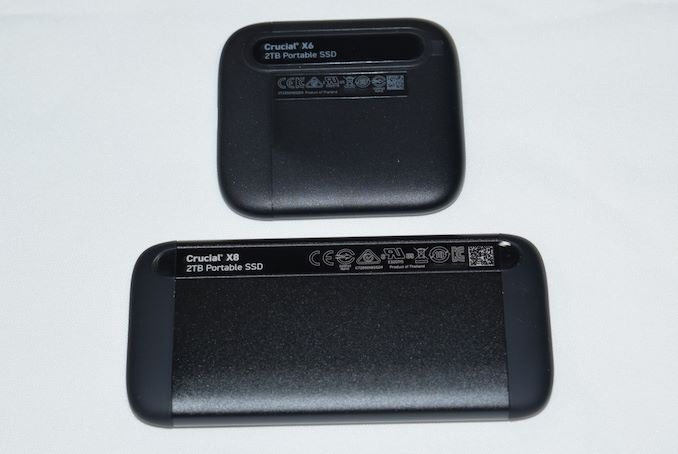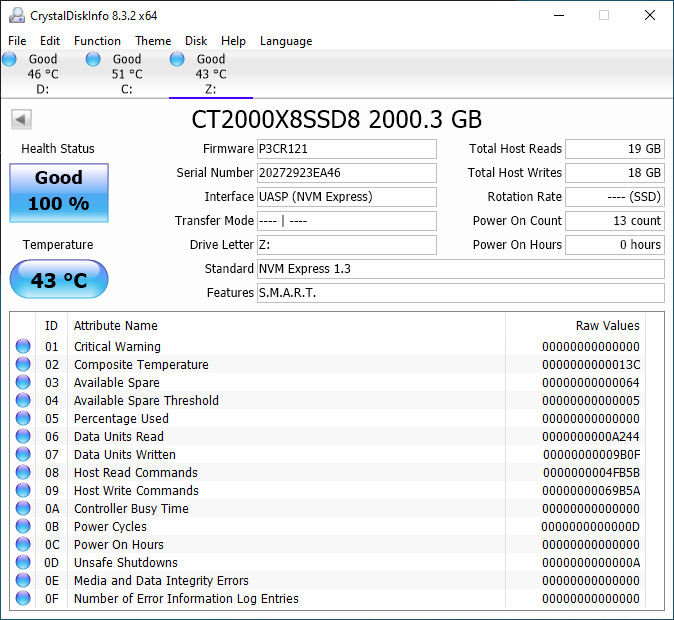Bus-powered portable flash-based storage solutions are one of the growing segments in the consumer-focused direct-attached storage market. The emergence of 3D NAND with TLC and QLC has brought down the cost of such drives. NAND manufacturers like Western Digital, Samsung, and Crucial/Micron who also market portable SSDs have an inherent advantage in terms of vertical integration. Last year, Crucial/Micron had announced its entry into the segment with the QLC-based Crucial Portable SSD X8, which was reviewed in January. A few months back, Crucial updated the lineup with a 2TB model while adding a lower-performance X6 member to the portfolio. This review sets out to determine how these high-capacity portable SSDs fare against the competitors in this market segment.
Introduction
External bus-powered storage devices have grown both in storage capacity as well as speeds over the last decade. Thanks to rapid advancements in flash technology (including the advent of 3D NAND and NVMe) as well as faster host interfaces (such as Thunderbolt 3 and USB 3.x), we now have palm-sized flash-based storage devices capable of delivering 2GBps+ speeds. While those speeds can be achieved with Thunderbolt 3 and USB 3.2 Gen 2×2, mass-market devices have to rely on traditional USB. Entry-level USB drives utilize a flash controller with a direct USB interface, while the mid-range and high-end ones use flash packages behind either a SATA or NVMe SSD controller in conjunction with a SATA/NVMe-USB bridge. In today’s review, we take a look at the Crucial Portable SSD X6, a SATA SSD behind a USB 3.2 Gen 2 bridge chip, and the Crucial Portable SSD X8, a NVMe SSD behind a USB 3.2 Gen 2 bridge chip.
From a performance viewpoint, the X6 and X8 fall under different categories that are referred to here on as SATA-class and NVMe-class. Under the SATA-class devices, the Crucial Portable SSD X6 is pitted against the following external SSDs that were reviewed earlier:
- ADATA SC680 960GB
- HP P600 500GB
The Crucial Portable SSD X8 goes head-to-head against the following drives:
- Crucial Portable SSD X8 1TB
- OWC Envoy Pro EX USB-C 2TB
- SanDisk Extreme PRO Portable SSD v2 2TB [JHL6540]
- SanDisk Extreme Portable SSD v2 1TB
- WD My Passport SSD (2020) 1TB
A quick overview of the internal capabilities of the SATA-class drives is given by CrystalDiskInfo.
| SATA-Class External Drives Information |
| Crucial Portable SSD X6 2TBADATA SC680 960GBHP P600 500GBExpand All |
 |
The X6 supports both UASP and TRIM – the two main things to look out for when dealing with SATA SSDs behind a USB bridge.
On the NVMe-class drives front, CrystalDiskInfo provides the following information.
Despite TRIM not being explicitly mentioned in the CrystalDiskInfo report, we were able to activate it on the X8. Otherwise, the reported S.M.A.R.T attributes are similar to the ones obtained for the other external SSDs in the same class.
Testbed Setup and Testing Methodology
Evaluation of DAS units on Windows is done with a Hades Canyon NUC configured as outlined below. We use one of the rear USB Type-C ports enabled by the Alpine Ridge controller for both Thunderbolt 3 and USB devices.
| AnandTech DAS Testbed Configuration | |
| Motherboard | Intel NUC8i7HVB |
| CPU | Intel Core i7-8809G Kaby Lake, 4C/8T, 3.1GHz (up to 4.2GHz), 14nm+, 8MB L2 |
| Memory | Crucial Technology Ballistix DDR4-2400 SODIMM 2 x 16GB @ 16-16-16-39 |
| OS Drive | Intel Optane SSD 800p SSDPEK1W120GA (118 GB; M.2 Type 2280 PCIe 3.0 x2 NVMe; Optane) |
| SATA Devices | Intel SSD 545s SSDSCKKW512G8 (512 GB; M.2 Type 2280 SATA III; Intel 64L 3D TLC) |
| Chassis | Hades Canyon NUC |
| PSU | Lite-On 230W External Power Brick |
| OS | Windows 10 Enterprise x64 (v1909) |
| Thanks to Intel for the build components |
Our evaluation methodology for direct-attached storage devices adopts a judicious mix of synthetic and real-world workloads. While most DAS units targeting a particular market segment advertise similar performance numbers and also meet them for common workloads, the real differentiation is brought out on the technical side by the performance consistency metric and the effectiveness of the thermal solution. Industrial design and value-added features may also be important for certain users. The remaining sections in this review tackle all of these aspects after analyzing the features of the drives in detail.


